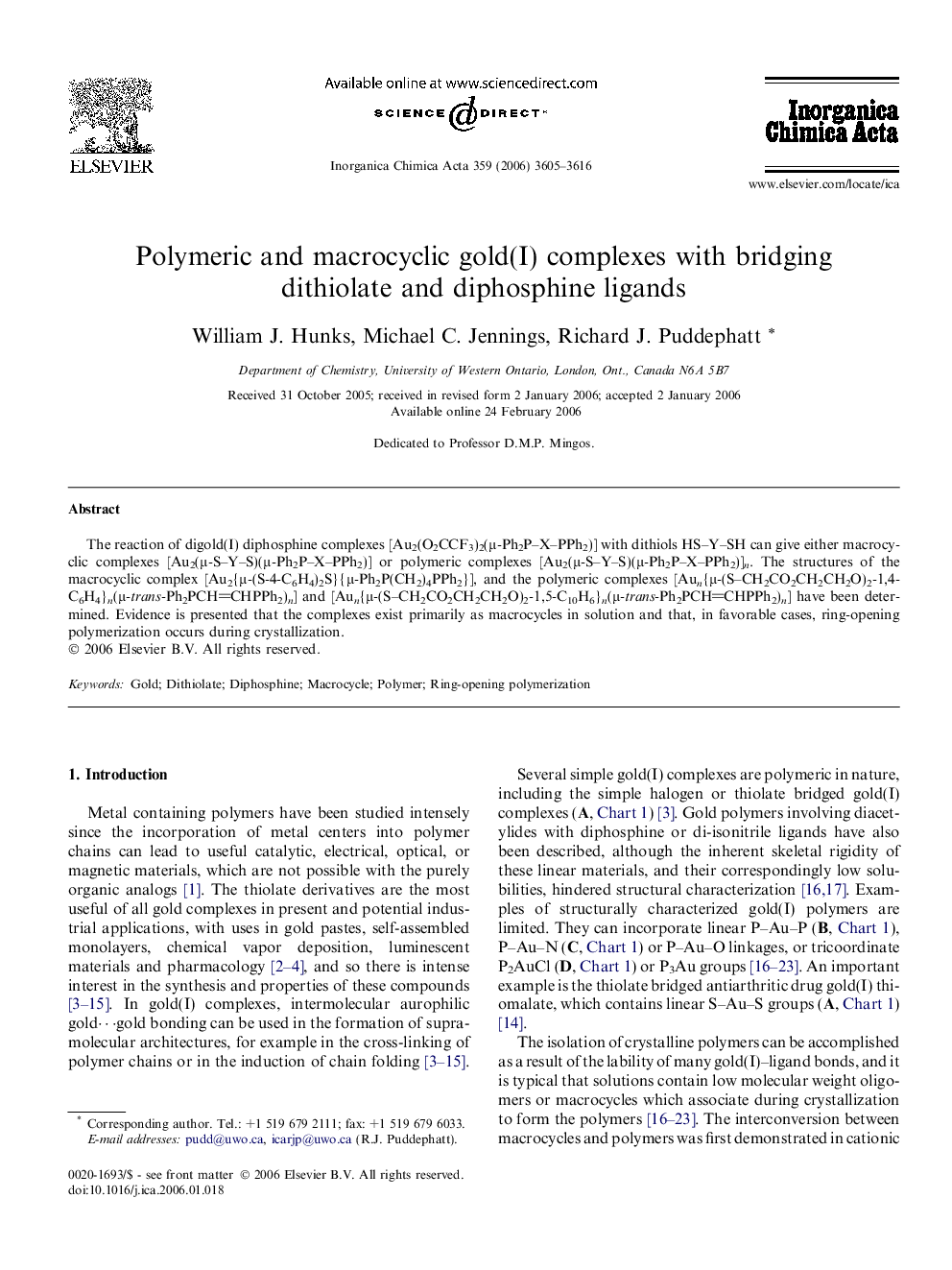| Article ID | Journal | Published Year | Pages | File Type |
|---|---|---|---|---|
| 1312967 | Inorganica Chimica Acta | 2006 | 12 Pages |
The reaction of digold(I) diphosphine complexes [Au2(O2CCF3)2(μ-Ph2P–X–PPh2)] with dithiols HS–Y–SH can give either macrocyclic complexes [Au2(μ-S–Y–S)(μ-Ph2P–X–PPh2)] or polymeric complexes [Au2(μ-S–Y–S)(μ-Ph2P–X–PPh2)]n. The structures of the macrocyclic complex [Au2{μ-(S-4-C6H4)2S}{μ-Ph2P(CH2)4PPh2}], and the polymeric complexes [Aun{μ-(S–CH2CO2CH2CH2O)2-1,4-C6H4}n(μ-trans-Ph2PCHCHPPh2)n] and [Aun{μ-(S–CH2CO2CH2CH2O)2-1,5-C10H6}n(μ-trans-Ph2PCHCHPPh2)n] have been determined. Evidence is presented that the complexes exist primarily as macrocycles in solution and that, in favorable cases, ring-opening polymerization occurs during crystallization.
Graphical abstractThe self-assembly of gold(I) with dithiolate and diphosphine ligands usually gives macrocyclic complexes in solution, but ring-opening polymerization can occur during crystallization.Figure optionsDownload full-size imageDownload as PowerPoint slide
